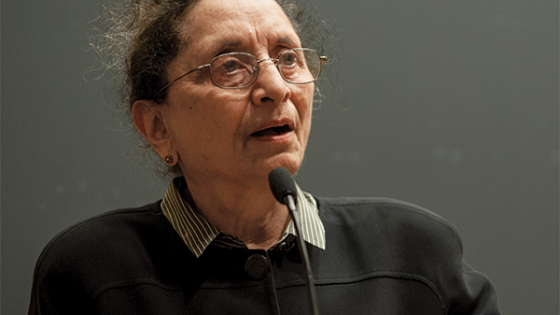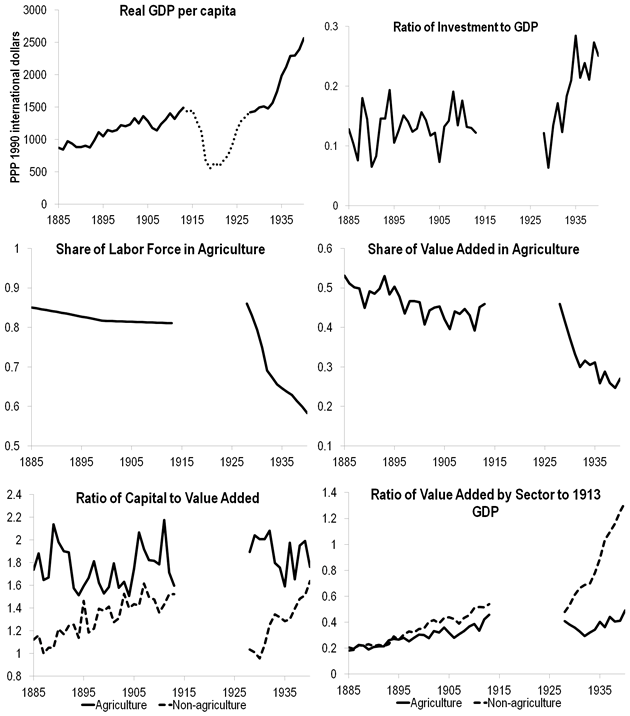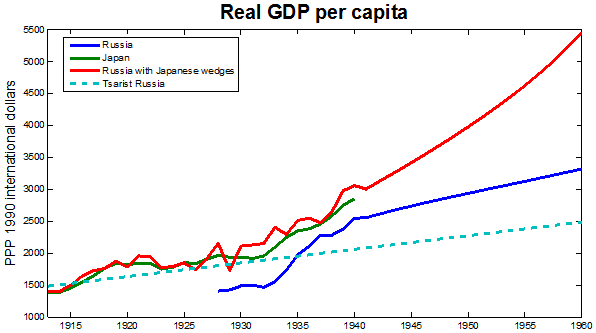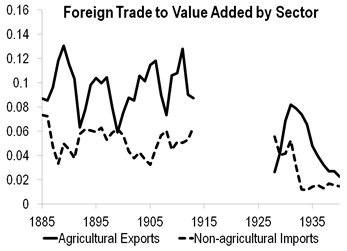In 1962, a prominent British economic historian, Alec Nove, asked whether Russia would have been able to industrialise in the late 1920s and 1930s in the absence of Stalin’s economic policies (Nove 1962). This question is still important for several reasons.
- The transformation of Soviet Russia from an agrarian to an industrial economy is a key episode in economic and political history.
The industrialised Soviet Union played a key role in the victory over Nazi Germany during WWII and, as one of the two superpowers during the Cold War, reshaped the postwar world.
- Stalin’s industrialisation (and especially the first three five-year plans from 1928 to 1940) is one of the most important examples of top-down structural transformation that inspired several generations of development scholars including Arthur Lewis, Roy Harrod, Evsey Domar, and Walt Rostow.
- Soviet development served as a model for policymakers in many other developing countries, including Nehru’s India, Mao’s China, and – although in a much softer version – Ataturk’s Turkey.
Even today, development scholars still debate whether Stalin’s industrialisation was an economic success and what Stalin’s policies can and cannot be used for countries that are industrialising today.
Russia in the 1920s
In a backward economy (such as Russia in the 1920s), structural change is key to development and growth. Value added per worker in agriculture is several times lower than in the modern, industrial sector. Reallocating resources from agriculture to industry may bring substantial economic growth. Policymakers in developing countries want to know if such reallocation can be done quickly and efficiently.
The debate about Stalin’s economic policies focuses exactly on these issues. Did Stalin’s industrialisation policies pay off in terms of economic welfare? Would Russia have industrialised without Stalin? Would Russia have done better without Stalin?
At the first glance (Figure 1), the data seem to be consistent with the Acemoglu and Robinson (2012) evaluation. They note that Stalinist industrialisation was “one brutal way” of unlocking “the economic potential for reallocating … labour from agriculture to industry” (Acemoglu and Robinson 2012). Russia outperformed its pre-1913 trend in per capita GDP, doubled its investment to GDP ratio, and moved about 30% of its labour force from agriculture to manufacturing and services.
Figure 1. Indicators of Russian industrialisation
On the other hand, these graphs do not necessarily prove that this transformation was driven by Stalin’s policies. It may well be the case that industrialisation and growth would have happened anyway. The graphs also do not tell us to what extent Soviet citizens benefitted from Stalin’s policies in the short- and in the long-run – compared to a reasonable counterfactual.
Recent research
In a recent paper, we address these issues by constructing a new dataset and using modern macroeconomic tools (Cheremukhin et al. 2013). In particular, we study a standard two-sector neoclassical model of unbalanced growth that has been extensively employed in the literature to analyse industrialisation and structural change in other contexts.1 We do not assume that markets are frictionless; instead, we allow for distortions (or ‘wedges’) in product and factor markets.
Certainly, Stalin’s economy was not a neoclassical market economy. We do not assume that markets worked in the Soviet Union nor do we use Soviet price data. Still, the neoclassical model helps us to analyse the planned economy. We calculate the magnitude of the wedges that would make a neoclassical economy with wedges perform similarly to Stalin’s economy in terms of real variables (such as output in the agricultural and manufacturing sectors, labour and capital used in these two sectors, private and government consumption etc.). We then perform the same exercise for the Russian economy before WWI and for the economy of Japan (which turns out to be a convenient benchmark for the Russian economy).
Once we calculate the wedges in the product market, the capital market, the labour market, and the intertemporal wedge, we describe how to connect these wedges to actual policies carried out by Stalin’s government (such as collectivisation or industrialisation) and to distortions present in the economy. We then compare Stalin’s economic performance to a counterfactual scenario in which we extrapolate the Tsarist pre-1913 trends. Essentially, we estimate what would have happened had the Tsarist economy continued with the same productivity trends and distortions as it had before 1913. Moreover, as we can quantify the role of each wedge and understand connections between policies and wedges, we can evaluate the contribution of each policy and of each external factor to the performance of the Stalinist and Tsarist economies.
The disaster of collectivisation
Our analysis of wedges clearly divides Stalin’s industrialisation years 1928-40 into two sub-periods. Up until mid-1930s, the economic policies resulted in dramatic spikes in wedges and in substantial drops in total factor productivity in both the manufacturing and the agricultural sector. We connect these changes to the hectic and violent attempts of expropriating the peasants through ‘collectivisation’ of land and to the policy of the ‘price scissors’ (forcing peasants to sell agricultural output at below-market prices). The expropriations from peasants were an essential part of Stalin’s policy – the government needed to export grain to pay for the import of industrial equipment. Also, the resulting impoverishment of peasants was supposed to increase their incentives to move to the cities. Naturally, these policies would not be possible without use of violence. In 1929, there were 1,300 peasant riots with more than 200,000 participants (Khlevnyuk 2009). In March 1930 alone, there were more than 6,500 riots with 1.4 million peasants participating. All these riots were brutally suppressed.
The collectivisation resulted in a dramatic fall in agricultural productivity and, subsequently, in an unprecedented famine which cost about 6 million lives. The fall in output, in turn, undermined the attempts to import the necessary industrial capital. GDP stagnated and the first five-year plan was not fulfilled.
Given the disastrous outcomes of collectivisation, the government retreated and pursued more balanced policies.2 Since 1935, the wedges normalised and declined to pre-1913 levels and even lower. Agricultural TFP rose back to the long-run trends; manufacturing TFP increased but stayed substantially below the trend (actually, at the level of 1913). On the other hand, by the end of 1930s, Soviet economy had more capital and labour in the modern sector than the pre-1913 trends would imply.
Figure 2. TFP in the manufacturing and agricultural sectors
To evaluate the costs and benefits of Stalin’s industrialisation, we calculate Russian consumers’ welfare (discounted utility). We find that Stalin’s economic policies resulted in exceptionally large losses of welfare in 1928-40 (about 24% of aggregate consumption relative to the counterfactual based pre-1913 TFP growth trends and wedges).
Counterfactual analysis and the role of international trade
In order to obtain the upper bound of Stalin’s potential long-term contribution to the Soviet economy, we consider a scenario where WWII did not happen and Stalin’s industrialisation continued – with the capital levels and wedges achieved in the late 1930s. Being generous to Stalin, we assumed that he would manage to grow TFP in both sectors at pre-1913 rates. Under these assumptions we found that post-1940, Stalin’s economy would have brought Soviet citizens non-trivial gains (about 16% of aggregate consumption). However, once we compare the short-run losses in 1928-40 and the post-1940 long-run gains, we find that losses still outweigh the gains. The lifetime welfare of the generation born in 1928 would be 1% lower under Stalin.
We also carry out comparisons with Japan and with a scenario in which Russia would continue with the dual-track ‘New Economic Policy’ that was conducted before Stalin’s ‘Great Turn’ in 1928. Both scenarios result in higher welfare for the Soviet citizens.3
Figure 3. Counterfactual analysis
Furthermore, we study the role of foreign trade. Part of Stalin’s success of industrialisation was due to drastic reduction in foreign trade because of isolation of the Soviet Union (see Figure 4). Likely, the reduction of trade would have happened anyway if Russia remained a market economy. Indeed, the Great Depression resulted in a substantial fall in Russia’s terms of trade; if Russia were in a market economy, this would have resulted in reallocation of labour and capital from agriculture to industry.
Figure 4. The isolation of the Soviet Union
Conclusion
Therefore our answer to the ‘Was Stalin Necessary?’ question is a definite ‘no’. Even though we do not consider the human tragedy of famine, repression and terror, and focus on economic outcomes alone, and even when we make assumptions that are biased in Stalin’s favour, his economic policies underperform the counterfactual. We believe Stalin’s industrialisation should not be used as a success story in development economics, and should instead be studied as an example where brutal reallocation resulted in lower productivity and lower social welfare.
References
Acemoglu, D, and J Robinson (2012), Why nations fail: The Origins of Power, Prosperity, and Poverty, Crown Business.
Allen, R (2003), Farm to factory: a reinterpretation of the Soviet industrial revolution, Princeton University Press.
Chari, V V, P Kehoe, and E McGrattan (2007), “Business cycle accounting”, Econometrica 75(3): 781-836.
Cheremukhin, A, M Golosov, S Guriev, and A Tsyvinski (2013), “Was Stalin Necessary for Russia’s Economic Development?”, NBER Working Paper No. 19425.
Cole, H, and L Ohanian (2004), “New deal policies and the persistence of the Great Depression: A general equilibrium analysis”, Journal of Political Economy 112(4): 779-816.
Hayashi, F and E Prescott (2008), “The depressing effect of agricultural institutions on the prewar japanese economy”, Journal of Political Economy 116(4): 573-632.
Khlevnyuk, Oleg (2009), Master of the house: Stalin and his inner circle, Yale University Press.
Millar, James (1974), “Mass Collectivization and the Contribution of Soviet Agriculture to the First Five-Year Plan: A Review Article”, Slavic Review 33(4): 750-766.
Nove, Alec (1962) “Was Stalin Really Necessary?”, in Alec Nove (1964), Was Stalin Really Necessary?, George Allen & Unwin: 17-39.
1 This approach suggested by Cole and Ohanian (2004) and Chari, Kehoe, and McGrattan (2007) was applied to the analysis of many historical episodes, including the industrialisation of Japan (Hayashi and Prescott 2008).
2 James Millar, a leading scholar of Stalin’s economy, referred to collectivisation as an “unmitigated policy disaster.” (Millar 1974).
3 In this sense, our results are consistent with those of Allen (2003) who – while generally more positive about Stalin’s economic policies – argues that continuation of the New Economic Policy would have been more beneficial than Stalin’s industrialisation.










